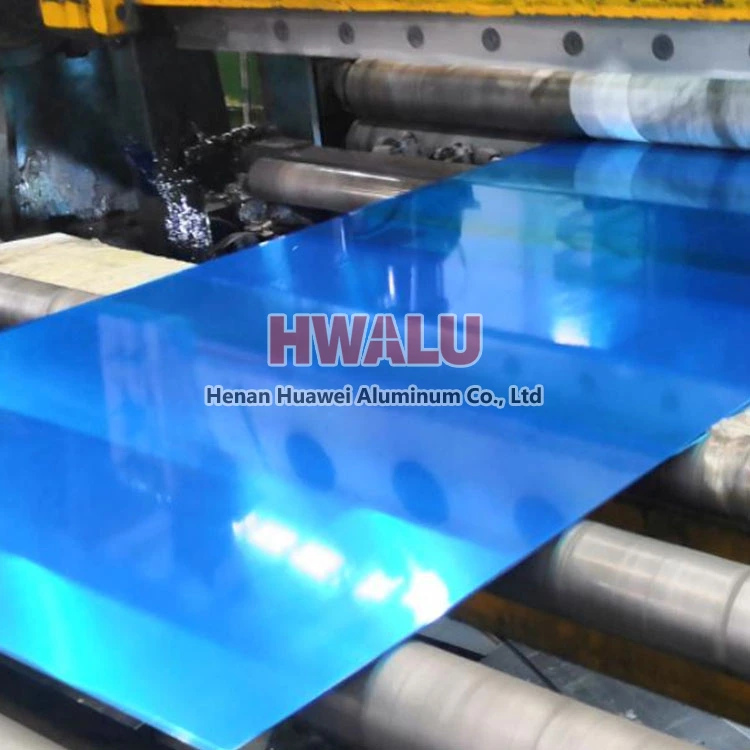The most typical use of aluminum sheet for wall is aluminum curtain wall. The aluminum veneer curtain wall is made of high-quality and high-strength aluminum alloy plates. Its common thickness is 1.5, 2.0, 2.5, 3.0MM, the model is 3003, and the state is H24. wall sheet Parameters of aluminum plain sheet plates for wall There are generally four thicknesses of curtain wall aluminum veneer: 1mm thickness, ...
What is Mirror Aluminum Sheet Mirror Aluminum Sheet refers to an aluminum sheet coil with a mirror effect on the surface of the sheet, created by rolling, polishing, and other methods. The reflectivity of such sheets can reach more than 86%, and for high reflective mirror aluminum sheets, it can reach more than 95%. Common alloys for mirror aluminum sheet coil include 1000 series, 3000 series, and 5000 se ...
What is 18 gauge aluminum sheet? 18 gauge is a way of expressing the thickness of aluminum sheet, which is typically about 0.0403 inches (or about 1.02 mm) thick. This is a common specification for a variety of aluminum applications, including automotive panels, signage and lightweight structural components. 18 gauge aluminum sheet equivalent expression 18 ga aluminum sheet 18 gauge aluminium sheet ...
Definition of 4mm aluminum sheets A 4mm aluminum sheet, also known as an aluminum plate, is a panel of aluminum that is 4 millimeters thick. It’s a result of basic raw-form aluminum being pressed and rolled into panel form under high pressure. Aluminum sheets are characteristically manufactured to be very thin and lightweight, yet sturdy enough to offer extreme versatility alongside inherent ease of installat ...
Refer to the national standard of the people's Republic of China GB / T 3880.3-2006 aluminum and aluminum alloy plates and strips for general industrial use Part 3: dimensional deviation. The tolerance range of aluminum plate corresponding to various parameters is listed in detail here. See the table below for details. The allowable thickness deviation of cold rolling mill aluminum sheet and strip is divided i ...
5052 aluminum sheet, mainly for the magnesium alloy element which have a good forming performance, corrosion resistance, weldability and medium strength, used to make airplane oil tank, oil pipe, as well as the transportation vehicles, ships, sheet metal parts, instrument, lamps stent and rivet, metal products, electrical enclosure, etc.5052 aluminum sheet, with thickness more than 6mm and magnesium content betwe ...
6063-T5 aluminum is 6063 aluminum in the T5 temper. To achieve this temper, the metal is artificially aged until it meets standard mechanical property requirements. The graph bars on the material properties cards below compare 6063-T5 aluminum to: 6000-series alloys (top), all aluminum alloys (middle), and the entire database (bottom). A full bar means this is the highest value in the relevant set. A half-full ba ...
5083 Aluminum Alloy – Supplied in sheet marine grade tempers H116, H321, H323; to spec ASTM B928. Tempers.O, H112, H32; to spec ASTM B209, and extrusion shapes in various tempers and specifications. This is an excellent marine environment corrosion resistant aluminum alloy, It is primarily an alloy used for its corrosion resistant properties as it is especially good on inter granular corrosion resistance. Also, t ...
5052 aluminum sheet is often referred to as "Anodize Quality Aluminum", as it has excellent finishing qualities and anodized coatings are bright and clear. The major alloying element in 5052 is magnesium in sufficient quantities to cause substantial lowering of the melting point without producing brittleness. When magnesium is used as the major alloying element, or in combination with manganese, the result is a m ...







